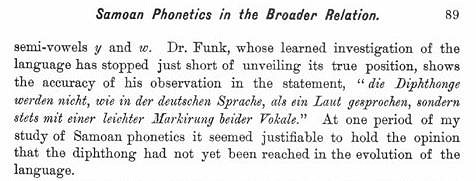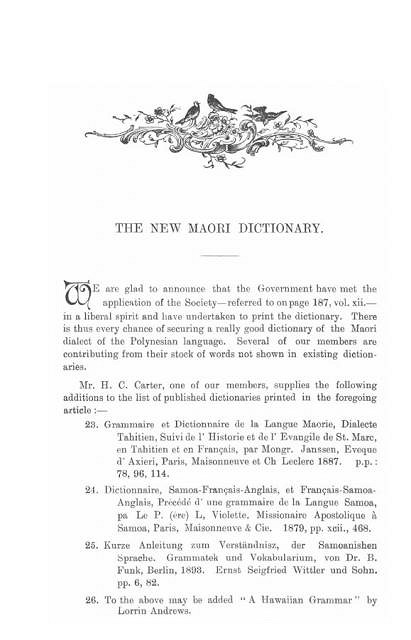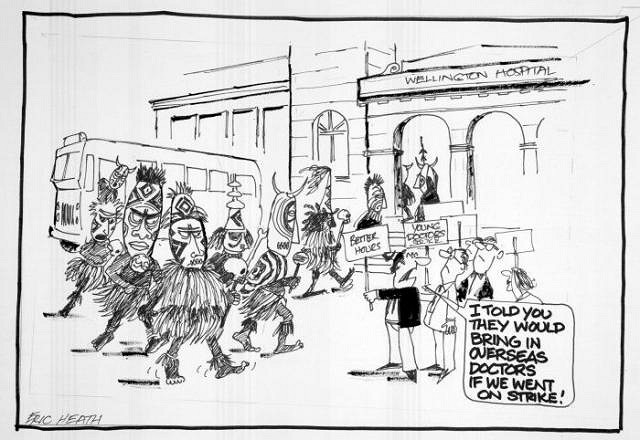Tiki Central / Tiki Drinks and Food / The real Dr. Funk
Post #628381 by TikiTomD on Sun, Mar 11, 2012 12:48 PM
|
T

TikiTomD
Posted
posted
on
Sun, Mar 11, 2012 12:48 PM
It’s amazing he found the time amidst a busy medical practice, but our eccentric German physician, Dr. Funk, made a scholarly study of the Samoan language, with a particular focus on medical terminology. He published his findings in 1893 in a single 82-page volume that also contained his notes on Samoan meteorology and a map of Apia Harbor: Bernhard Funk, *** Kurze Anleitung zum Verständniß der Samoanischen Sprache: Grammatik und Vokabularium : nebst einem Anhange: Meteorologische Notizen; mit einem Plane von Apia***, Ernst Siegfried Mittler und Sohn, Berlin (1893). According to the Google translator, the title in English is Short Guide to the Samoan language understanding: Grammar and vocabulary -- in addition to an appendix: Meteorological Notes, with a plan of Apia. The book is long out of print and seems to only be available at various state and university libraries in Germany. I found several references to Dr. Funk’s book in The Journal of the Polynesian Society. In the first article, William Churchill commended Dr. Funk for his insight on Samoan diphthongs... The Journal of the Polynesian Society Volume 17, Number 2, December 1908 Dr. Funk’s statement above is translated from German by the Google translator as “The diphthongs are not, as in the German language, spoken as a sound, but always with a slight indication of both vowels.” The second article cited Dr. Funk’s book in a list of published dictionaries of the Polynesian language... The Journal of the Polynesian Society Volume 13, Number 2, June 1904 Leilani Burgoyne, in “Going ‘Troppo’ in the South Pacific: Dr. Bernhard Funk of Samoa 1844–1911,” states that Dr. Funk’s book was perhaps one of the earliest to detail Samoan language and grammar. Written in Samoan, German and English, she cites it as an indication of Funk’s commitment to understand Samoan ways and traditional medicine. It seems that Western medicine and the traditional regularly intersected in his practice, as Dr. Funk might initially be called upon by a native Samoan to perform an operation or provide urgent care, then the patient would invariably turn to a traditional Samoan healer, a Fofo or Taulasea, for follow-up care. Leilani notes that however frustrating this might have been to the good doctor, the evidence is that he never gave up continuing to treat his Samoan patients. A bit of Southern Hemisphere medical humor... **Heath, Eric Walmsley, 1923- : I told you they would bring in overseas doctors if we went on strike! October 1985. While trying to locate Dr. Funk’s book, I ran across another title, this one the 1838 medical thesis of his father, Dr. Wilhelm Bernhard Funk, written in Latin... De testiculi degeneratione fungosa ex casu quodam illustrata : Dissertatio Inauguralis I hesitated to translate the title, given the easily inferred subject, but here it is: Spongy Degeneration of the Testicles Illustrated by a Case: A Thesis. Let’s hope this malady wasn’t common beyond the 19th century, perhaps limited to those who routinely rode horses in uncomfortable saddles, or maybe an occupational hazard of early cavalry officers. In the unlikely case anyone's interested, copies may still be found in several German university libraries, as well as various medical school libraries around the world, including Cornell and Harvard. -Tom |



